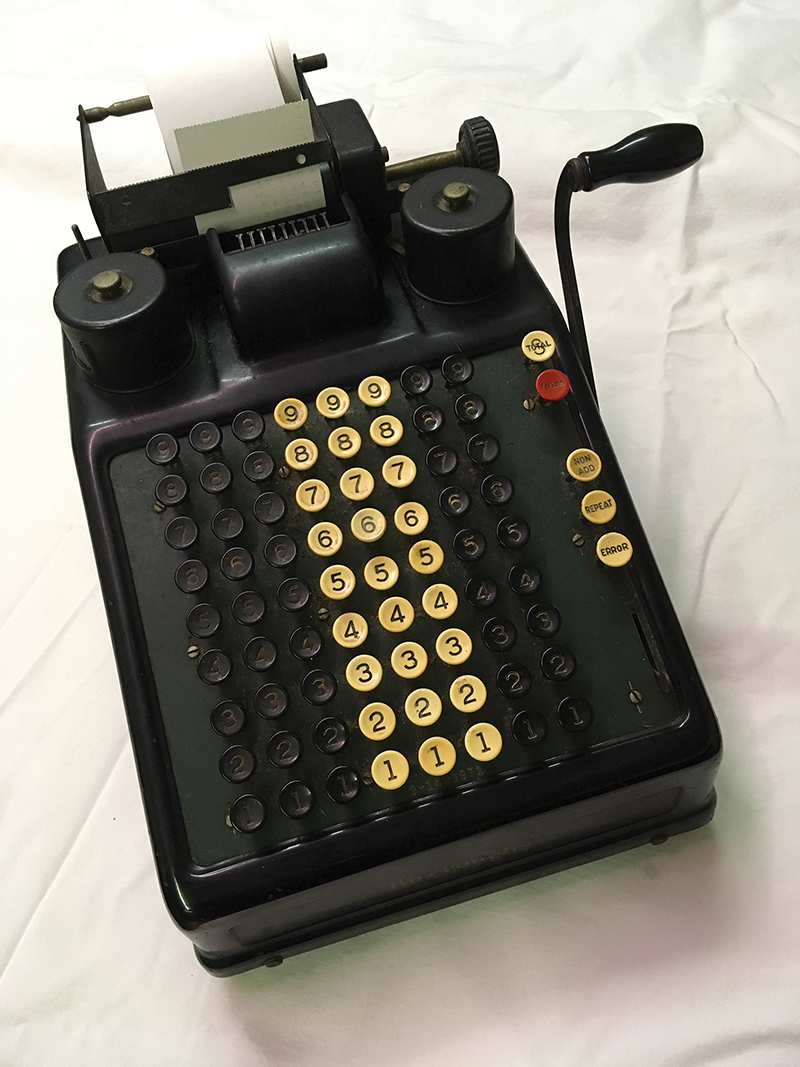Dorri Partain
Northeast News
After years of working as a bank clerk, William S. Burroughs (1855-1898) switched vocations to concentrate on creating a better adding machine.
The son of a machinist, he had grown up building mechanical things but later took a job at the Cayuga County National Bank in Auburn, New York. Clerks had to either compute long lists of numbers by hand or use adding systems that were not only difficult to use but not always accurate. In declining health, he moved to St. Louis and took a position with the Boyer Machine Shop, were he could develop his adding machine concept. The owner, Joseph Boyer, supported Burroughs’ invention and continued development over the years.
In 1885, Burroughs applied for his first U.S. patent, submitting a design prototype with a nine-digit keyboard and a printing mechanism that would print out the total of the computation. While his patent would not be approved until 1888, he founded the American Arithmometer Company in1886. Boyer’s shop was contracted to produce additional machines; the original model sold for $475.
Burroughs would not live to see his invention become the top-selling adding machine world-wide. His health continued to decline and when he passed in 1898, Boyer and other investors took over the company. In 1904, they changed the company name to Burrough’s Adding Machine Company, moved the manufacturing facility to Detroit, Michigan, and bought out other smaller manufacturers and competitors. The machine’s ability to add and subtract was added to models in 1911, and a portable version, weighing less than 20 pounds, was introduced in 1920.
All machines were crank-operated until the first electric models were introduced in 1928. By 1935, the company produced 350 different models of adding machines, both electric and non-electric. Burroughs merged with Sperry Rand, manufacturer of the Remington typewriter in 1986 to become Unisys Corporation, a global information technology company.



















